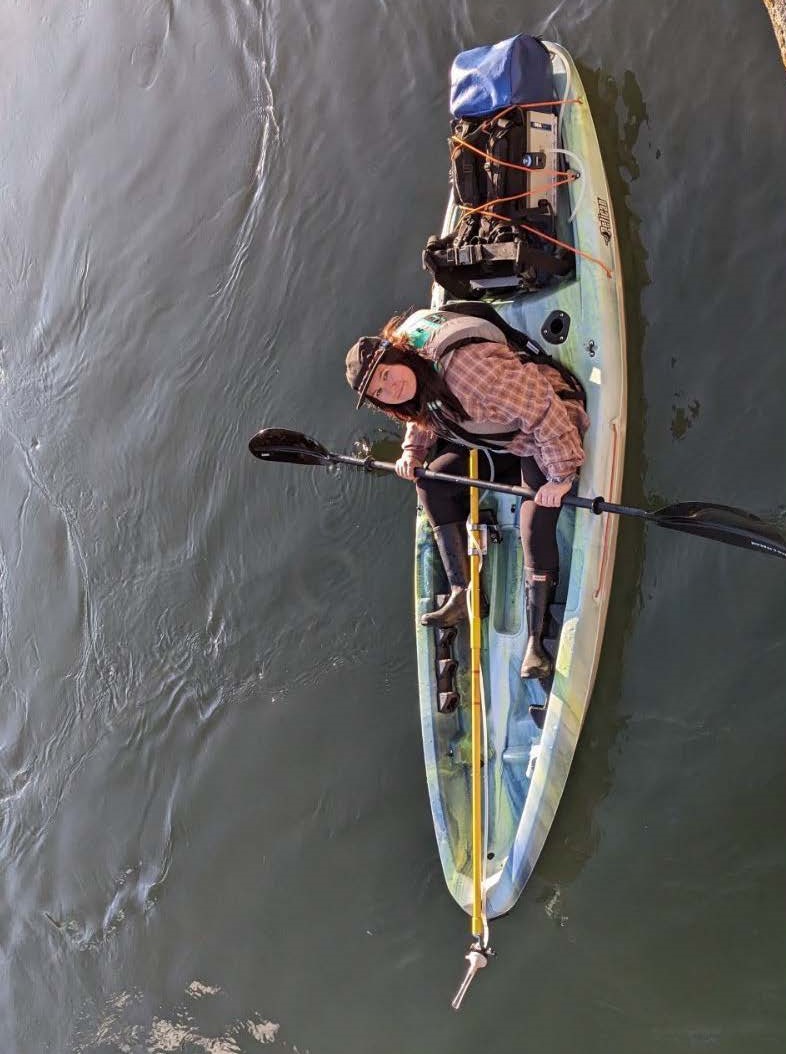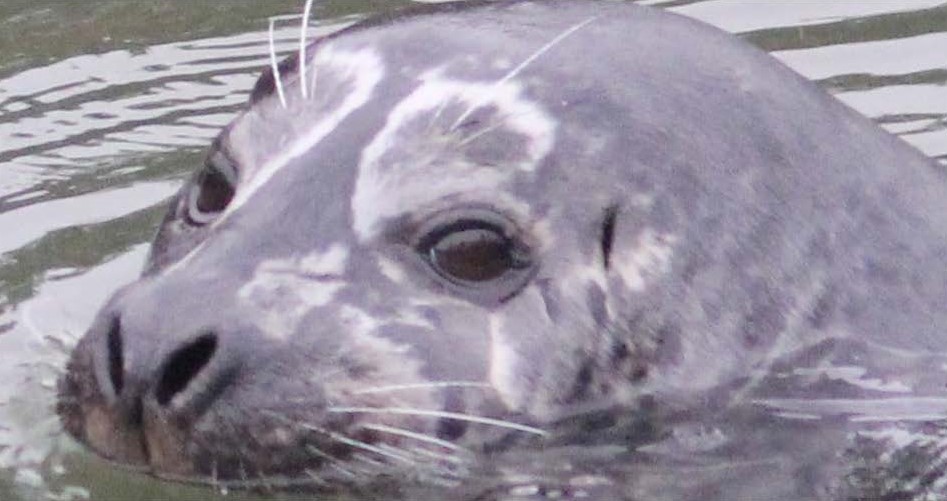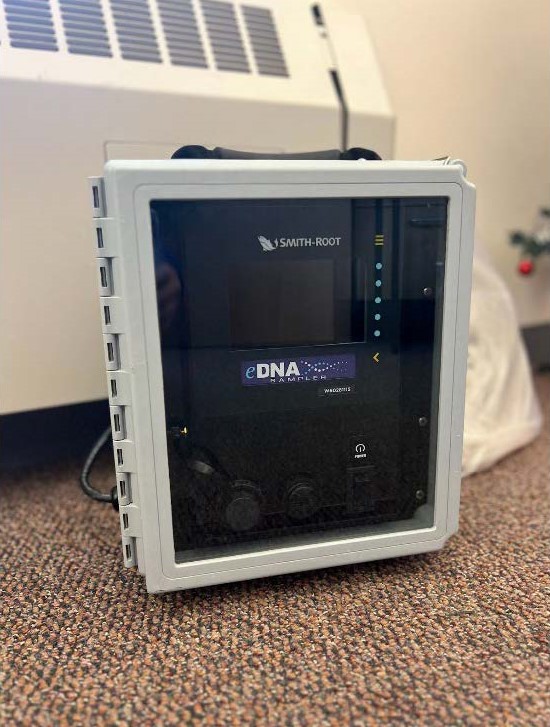Bridging Worlds Through Mammal DNA and Photography
Biology WWU Graduate Student Matches Photographs of Harbor Seals with Water DNA Samples
by Larissa G. Capella
For her graduate research, Victoria Vinecke works with many collaborators - but she spends the most of her time with Goggles, a harbor seal. She studies harbor seals via environmental DNA (eDNA) sampling while tracking the seal population.
It all began when Professor of Biology Alejandro Acevedo-Gutierrez decided to focus on something “not many scientists were studying.” According to him, there were already many studies being done on killer whales in the Pacific Northwest and harbor seals had piqued his interest. At the Biology Department’s Marine Mammal Ecology Lab, or MMEL, undergraduate and graduate students collaborate on the studies of harbor seals and their interaction with humans. “It turned out to be great! A lot of my students feel really empowered doing the work,” he states.
This empowerment brought Vinecke to work with her favorite animals from when she was child. “I’ve always loved harbor seals. There was a time in my life where I would come to Oregon to see them and I would just cry ‘cause they’re so cute,” she says. “Now, I don’t cry every time I see a harbor seal. That’d be a little dramatic.”
Vinecke can extract a harbor seal's DNA from water samples, which are environmental DNA, to determine the sex and match the genetic information to a photograph of a seal that was just there. “So, we know that this seal has this sex and this kind of genotype,” Acevedo Gutierrez summarizes her research. Vinecke must be able to match the time the seal was present with the time the sample was collected.
Even though the process sounds complicated, Vinecke argues that there are several things about it that make it fascinating and unproblematic. She keeps good communication with the undergraduate students. They arrive at Whatcom Creek earlier, taking pictures of the seals they see. Vinecke comes in a bit later, does the same, and waits for the seals to go underwater again. She affirms that because the creek is an estuary — where fresh and oceanic water mix — the water sample can be cleared out quite rapidly due to tidal changes. Because of that, she can associate the DNA with the seal that had just been there a few minutes ago: “That is how I am able to tell, ‘Oh, that’s that seal’s DNA.’ After, I go back to our harbor seal catalog and match it to the seal I sampled. It relies heavily on my judgment.” To do all of this, Vinecke utilizes some intriguing equipment.
She uses a filter with a tube and a square-shaped box called an eDNA Sampler. Vinecke collects a sample from the surface of the water. Since she only wants the seal’s DNA, Vinecke uses a filter that has a different micron size (1 micron = inches). This micron lets little cells pass through, trapping the mammalian ones in the filter itself. The whole sample is collected by the eDNA Sampler, where it sucks water in, and it is located at the back of the kayak. After that, there is the PCR process, or Polymerase Chain Reaction, which “takes one piece of DNA and makes multiple copies so you’re able to analyze it better,” she explains. The last step is for the DNA to go into sequencing.
The field sampling takes about two hours, where Vinecke collects an average of 2-3 samples. Currently, the lab has 22 samples from both of Vinecke’s field seasons. Vinecke also mentions how amazing it is to go to Whatcom Creek and to recognize some of the seals from previous visits. Most seals come to the creek to look for food at different times of the year. By 2022, Acevedo-Gutierrez and his students observed 70 harbor seals of which 91.7% had showed up only during the salmon run months. Some more individual harbor seals were observed for a year or more, but only one showed up all the time at the creek since the beginning of the study in 2011.
ID0039, nicknamed Goggles, is a harbor seal that was determined to be a male through Vinecke’s research. Goggles is “number one at eating,” Vinecke explains. “This fall, we even saw him bite a sea gull. I was like ‘Goggles, what are you doing?’ We call him Goggles because he has goggles on his forehead.” The lab’s catalog is currently almost reaching 300 seals because not every seal ever comes back but “Thirty Nine, we see yearly. He’s always there, even when there is no salmon. If there’s a seal in that creek and it is not salmon time, it’s Goggles. He’s vibing. He likes it there,” she says.
Being Goggles favorite place, Whatcom Creek has him in the spotlight for anyone who comes to visit. However, there are also several other seals that Vinecke and the undergraduates have to keep an eye out for every year. Some of the seals that show up at the creek are already in the catalog. To recognize them, Vinecke explains they’re able to ID seals by looking at three distinct markings. They also have to match the photos the catalog has of identified seals and that is how the seals are identified. Goggles has his own identification. Other seals such as Luna who has cataracts in one of her eyes - one is extremely blue. Some of them have scars and other features that make them stand out.
When harbor seals visit Whatcom Creek, each one stands out on its own. The diversity of these creatures makes them fascinating mammals to study. And as of now, there were no signs of a significant population decline. This excites the mammal lab as they continue to work with them. Each of the studies conducted by different students focuses on a unique aspect of harbor seals in the Pacific Northwest. “I wouldn’t want to be anywhere else. I love this program and I love my advisors. I feel extremely supported,” Vinecke explains in excitement.
If you have any more questions, make sure to check out the lab website: The Marine Mammal Ecology Lab and to visit Whatcom Creek to say hi to Goggles.
Photo Gallery

Victoria Vinecke holding a sample in the lab. Taken by Alexandrea Otto, 2023

Victoria Vinecke in a kayak where the eDNA Sampler is secured at the back and tube with filter is connected to a long yellow rod. Taken by Dr. Austen Thomas, 2022

Vinecke taking samples out after collection. Taken by Alexandrea Otto, 2022

Goggles, ID0039, swimming at Whatcom Creek. Taken by MMEL Members, 2023

Vinecke’s eDNA Sampler. Taken by Larissa G. Capella, 2024

Left to Right: Alexandrea Otto (grad student), Ava J (undergraduate), Isabel S (undergraduate), Kameran R (undergraduate), Victoria Vinecke (grad student), Jasper M (undergraduate)